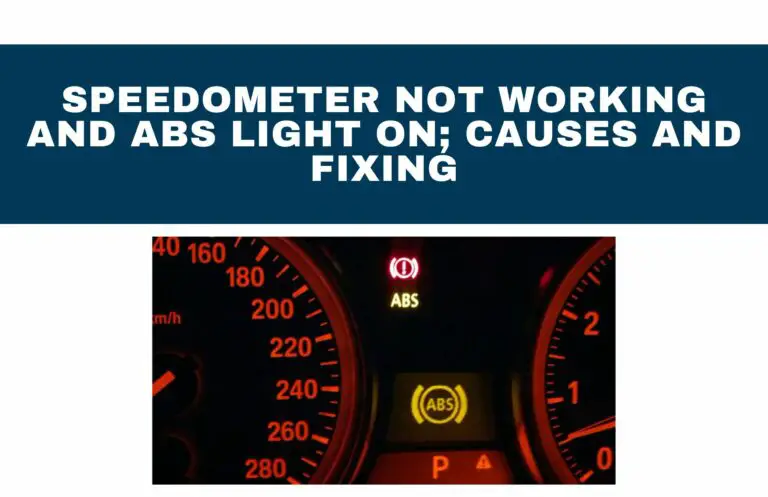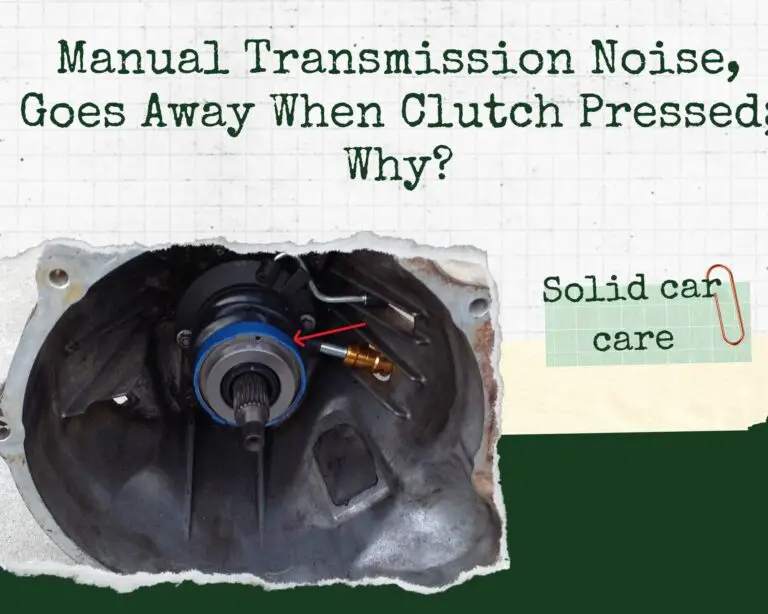How To Turn Off Traction Control; A Step-by-Step Guide

Traction control is a vital feature in modern vehicles, designed to enhance safety and maintain stability while driving. However, there may be instances when disabling traction control becomes necessary.
In this article, we will provide a detailed and easy-to-understand guide on how to turn off traction control safely. It is important to remember that responsible driving and awareness of the potential risks are crucial when opting to disable this feature.
Table of Contents
- What really is traction control?
- What are the reasons to Disable Traction Control?
- How to Turn Off Traction Control?
- What are any considerations and precautions?
- What are any Safe Driving Practices?
- How do I clear my traction control light?
- What are the advantages and disadvantages of disabling traction control?
- Conclusion
What really is traction control?

Traction control is a system integrated into vehicles to prevent wheel slippage and loss of control. By utilizing sensors, it detects when a wheel loses traction and applies corrective measures to ensure stability.
When enabled, traction control reduces engine power or applies the brakes to the spinning wheel, transferring torque to the wheels with better grip.
What are the reasons to Disable Traction Control?
While traction control is beneficial in most driving situations, there are circumstances where turning it off can be advantageous. Here are a few scenarios:
- Off-Road Driving
When traversing challenging terrains like mud, sand, or gravel, turning off traction control may allow controlled wheel spin, helping to gain traction and navigate through difficult conditions.
- Extreme Weather Conditions
Disabling traction control can provide more control over the vehicle in certain weather conditions, such as deep snow or icy roads. It enables better wheel spin, which may be necessary to free the vehicle from a stuck position.
How to Turn Off Traction Control?
To disable traction control, follow these general steps:
Step 01- Locate the Traction Control Button or Switch
In most vehicles, the traction control button or switch is situated on the center console or near the steering wheel. Look for an icon representing a car or the letters “TC” or “TCS.”
Step 02- Press and Hold the Button or Switch
Once you have identified the traction control button, press and hold it for a few seconds. Some vehicles may require a longer press or multiple presses to disable traction control.
Step 03- Verify Disabling of Traction Control
Upon successfully disabling traction control, a message or indicator light will appear on the dashboard, confirming the deactivation of the system.
Step 04- Disabling Stability Control (if applicable)
Some vehicles may have a separate stability control system. Locate and disable the stability control button to fully disable all stability-related features, usually represented by a car icon with wavy lines underneath.
How To Turn Off Traction Control Without Button?
solidcarcare.com
How to turn off the traction control without the button?
If your vehicle does not have a dedicated traction control button or switch, you may still be able to turn off traction control using alternative methods. Here are a couple of common approaches:
Check the Vehicle Settings Menu
Some vehicles have an onboard computer system with a menu that allows you to customize various settings. Within this menu, you might find an option to disable traction control.
Access the vehicle settings through the infotainment system or the instrument cluster controls. Look for a “Traction Control” or “Stability Control” section within the menu and follow the instructions to turn off the feature.
Use a Diagnostic Tool
Certain vehicles may require the use of a diagnostic tool, such as an OBD-II scanner, to access the vehicle’s onboard computer system and disable traction control. This method is typically more advanced and may require technical knowledge or assistance from a professional mechanic.
Connect the diagnostic tool to the OBD-II port (usually located under the dashboard) and navigate through the system menus to find the option for disabling traction control. It is essential to refer to the specific instructions the diagnostic tool manufacturer provides or consult a professional for guidance.
What are any considerations and precautions?

Before proceeding to drive with traction control off, it is crucial to understand the potential risks and take necessary precautions:
Increased Risk of Loss of Control
Disabling traction control reduces the vehicle’s stability and increases the likelihood of wheel spin. This can lead to loss of control, especially on slippery or uneven surfaces. Only disable traction control if you are experienced and confident in your driving abilities.
Adjust Driving Behavior
When driving with traction control off, it is important to adapt your driving style. Maintain a controlled speed, avoid sudden acceleration or braking, and anticipate the vehicle’s response to prevent skidding or loss of control.
Be Mindful of Road Conditions
Always stay aware of the road conditions and adjust your driving accordingly. Exercise caution when driving on slippery surfaces, and remember that traction control provides an added layer of safety in such situations.
What are any Safe Driving Practices?
To ensure safety when driving with traction control disabled, follow these essential practices:
- Drive Smoothly
Apply gradual and controlled acceleration and braking inputs to maintain stability and prevent sudden wheel spin.
- Maintain a Safe Speed
Avoid excessive speed, especially on curves or when road conditions are compromised.
- Re-engage Traction Control
Once you have finished driving in challenging conditions or situations that necessitated disabling traction control, remember to re-engage the system for normal driving. This will restore the vehicle’s stability and safety features.
How do I clear my traction control light?
To clear the traction control light, you need to address the underlying issue that triggered the light. First, check for any loose or damaged wheel sensors and ensure they are properly connected. Next, inspect the ABS system for any faults or malfunctions.
If the issue persists, it is recommended to have the vehicle diagnosed using a professional diagnostic tool to identify and rectify the specific problem. Once the underlying issue is resolved, the traction control light should automatically clear itself.
What are the advantages and disadvantages of disabling traction control?
Disabling traction control in a vehicle can have both advantages and disadvantages, which I’ll outline below:
Advantages of disabling traction control:
Enhanced vehicle performance
Traction control systems are designed to limit wheel spin and provide stability during slippery conditions. However, in certain situations, such as off-road driving or high-performance driving, disabling traction control can allow more wheel spin, which can be advantageous. This can help provide better control over acceleration, especially in situations where some wheel slip is desirable.
Increased maneuverability
Traction control systems can sometimes restrict the vehicle’s ability to maneuver effectively in specific situations. By disabling traction control, drivers have the freedom to perform maneuvers like power slides, drifting, or executing tight turns where controlled wheel slip is necessary.
Better control on loose surfaces
On loose surfaces like sand, gravel, or snow, traction control systems can sometimes interfere and limit the vehicle’s ability to gain traction. By disabling the system, drivers can allow the wheels to spin to a certain extent, which can help “dig in” and find traction, especially when trying to get out of deep snow or loose terrain.
Disadvantages of disabling traction control:
Reduced stability and safety
Traction control systems are primarily designed to enhance stability and safety by preventing wheel slip and maintaining control during acceleration.
Disabling the system increases the risk of losing control, particularly on slippery or wet surfaces. This can lead to an increased likelihood of accidents or loss of vehicle stability.
Increased wear and tear
When traction control is disabled, the wheels can spin more freely, causing increased stress on various components such as tires, suspension, and drivetrain.
Excessive wheel spin can lead to accelerated wear and tear on these components, potentially reducing their lifespan and requiring more frequent maintenance or replacements.
Impaired performance in normal driving conditions
While disabling traction control may provide benefits in certain situations, it can hinder overall vehicle performance and handling in normal day-to-day driving conditions.
Traction control systems are designed to optimize traction and stability, ensuring smooth and controlled acceleration. Disabling these systems may lead to reduced performance, especially during cornering or sudden maneuvers
Rough Idle No Check Engine Light; What Should You Do?
solidcarcare.com
Conclusion
Traction control is a valuable safety feature designed to enhance vehicle stability and grip. However, there are instances when disabling traction control can provide advantages, particularly in off-road or extreme weather conditions.
Following the steps outlined in this comprehensive guide and driving responsibly, you can safely turn off traction control when necessary. Always evaluate your driving skills and exercise caution, as the absence of traction control increases the risk of loss of control. Drive safely, adapt to road conditions, and make informed decisions based on your experience and the situation at hand.






